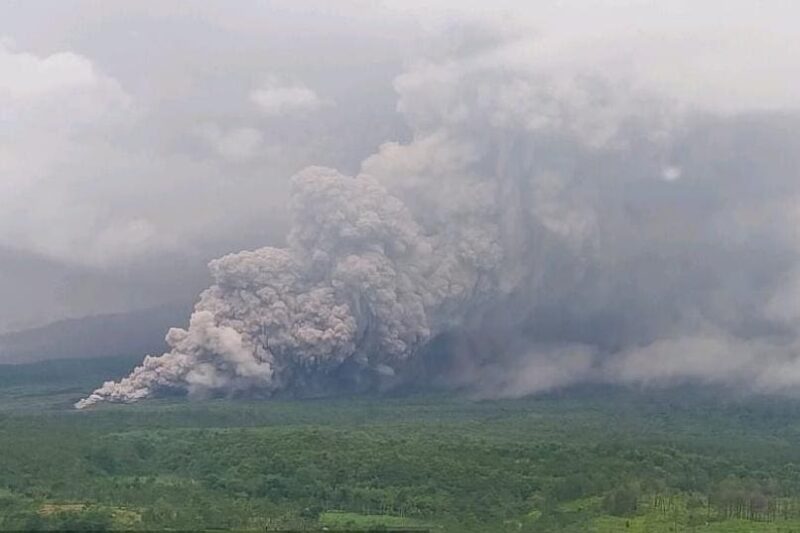In this photo released by the Geological Agency (Badan Geologi) of Indonesia’s Ministry of Energy and Mineral Resources, Mount Semeru releases volcanic materials during an eruption in Lumajang, East Java, Indonesia, Wednesday, Nov. 19, 2025. (Badan Geologi via AP)
Associated Press
Semeru volcano — the highest volcano on Java — erupted on the afternoon of November 19, 2025, with pyroclastic flows racing at high speed more than 8.5 kilometers down its slopes, as shown by video footage widely shared on social media platforms like X.
Mount Semeru is one of fifteen active volcanoes on Java, one of Indonesia’s most densely populated islands. In 2010, an eruption of Mount Merapi generated a series of deadly pyroclastic flows that killed 350 people and forced more than 10,000 residents to flee.
Currently, there are no reports of casualties from the Semeru eruption, but authorities have ordered the evacuation of nearby villages as a precaution.
Indonesia frequently experiences earthquakes and volcanic eruptions because the archipelago sits atop the intersection of various tectonic plates, including the Pacific plate, the Eurasian plate, the Australian plate and the Philippine Sea plate.
The Philippine plate, consisting mostly of heavy oceanic crust, dives under the Eurasian continental plate. When the Philippine plate reaches a depth greater than 100 kilometers, the water it contains lowers the fusion point of the surrounding rocks, which creates magma. This magma is hotter and less dense than the rocks around and therefore starts to migrate towards the surface, where it eventually generates explosive volcanism typical of subduction zones.









